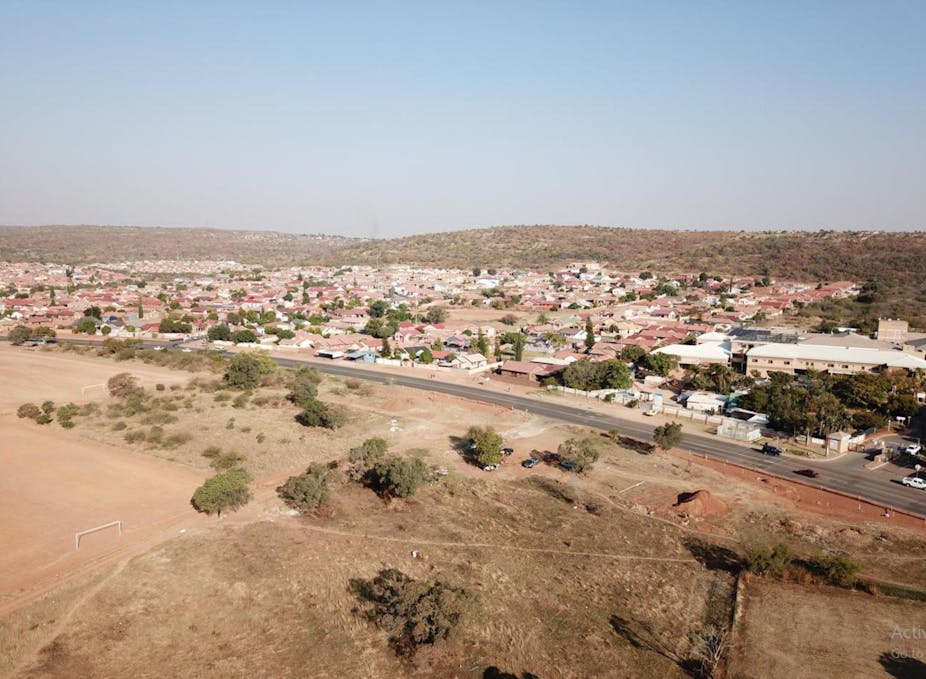Urban green spaces have recently been getting more research attention because of the benefits they offer.
Gardens, parks, reserves and trees have been linked to cultural, spiritual and alternative medical solutions. Natural or semi-natural land areas can also deliver ecosystem services like food, storm water management and climate control. Cities can plan and manage these for maximum benefit.
Our research team works on the Integrative Green Infrastructure Planning project, a collaboration between the University of Pretoria in South Africa and Aarhus University in Denmark. We reviewed policy documents relating to green infrastructure in the City of Tshwane (Pretoria and surrounds) to look for ways to plan, manage and maintain these green space resources. We also interviewed city officials and held workshops with officials and consultants.
We discovered that Tshwane needs guidelines based on green infrastructure principles. An increase in green infrastructure awareness among city officials and residents will increase the many benefits that green spaces can deliver.
Rapid development
Tshwane is in an area that is rich in biodiversity. It is one of the largest metropolitan municipalities by area in the world – growing at 3.1% a year – and serves as the administrative seat of South Africa’s government. Despite the change of government to democratic rule in 1994, the impact of the apartheid era still shows in the city’s neighbourhoods and land development. People are still separated spatially and some areas have more services, facilities and access to planned green infrastructure than others.
Green infrastructure in Tshwane takes the form of public and private gardens, street trees, community parks, unmanaged vegetated land and reserves. The City of Tshwane bioregional plan 2016 revealed that its biodiverse, protected and ecological areas covered 456,340 hectares – 26% of Tshwane’s land.
In any city, expansion often comes at the expense of green spaces. In Tshwane, our research found that the challenges to green infrastructure include rapid development, budget constraints, departmental silos, negative perceptions and limited capacity within departments. Collaboration is also insufficient among different disciplines in the city’s departments to manage and sustain green infrastructure.
One official told us:
The biggest challenge towards green infrastructure sustainability has to do with rapid developments linked to aspects such as higher rates of formalising the informal settlements, which is difficult for planning to meet up with.
Another challenge is that of resources. A city official explained that projects like electricity provision and road construction were prioritised above the environment. In her words:
If we look at the capital budget, the portion of the budget going into the environment is probably less than one percent.
We found that the flow of information among departments was limited. One informant said the situation could complicate necessary or urgent decisions and actions. For example, solutions to flooding might need to go beyond the Infrastructure and Engineering department and include the Social and Human settlement department, to help with welfare and relocation.
We don’t optimise the benefits of understanding the connections and linkages between different departments.
Another city official argued that residents’ perceptions could make or mar green infrastructure planning:
People just don’t comply with related green infrastructure by-laws because there’s not much ecological awareness.
From our policy documents analysis, the research team discovered that housing, roads, electricity and water were at the top of the government priority list. Most of the yearly budget was directed towards these services. Plans for green infrastructure were mostly embedded in climate action plans.
Read more: Green policies are in place for South Africa's major port city: but a key piece is missing

We believe there are opportunities for balancing the preservation of green spaces and the socio-economic needs of the people by creating multi-functional and beneficial green spaces. The city of Aarhus in Denmark is an example of a city where recently developed urban green spaces provide multi-functional benefits. For example, a new urban park also retains storm water during flooding events.
Transdisciplinarity has lately been highlighted as a way to tackle complex global challenges.
City officials in Aarhus spoke of the way green infrastructure planning should cut across divisions like engineering and housing departments, and across disciplines.
One said:
I see a need for trans- and interdisciplinarity within departments; the issue of managing storm water should not only be from the engineering perspectives but from planning and social angle.
One way to break down departmental silos could be to work together on joint projects.
Balancing needs
Cities need to balance residents’ daily needs with the conservation of green spaces for biodiversity, climate change adaptation and environmental health.
Based on the interviews, a way forward is for the city to engage in collaborative processes to create an enabling environment and develop actionable guidelines for people and green spaces to co-exist.
In our research, we mapped out three priority green areas to support Tshwane’s biodiversity.
We recommend that the high priority green areas that produce most green infrastructure benefits should be judiciously conserved. The medium priority areas should serve as buffer zones to the critical biodiverse areas that are at risk of climate hazards, fires and the like. The low priority areas are those with low green infrastructure benefits, characterised by high population density and informal development. These areas are flexible for development.
Green infrastructure planning and management includes increasing awareness of the benefits of green space to government, developers and residents, creating a joint vision and making it clear what’s expected from everyone.

